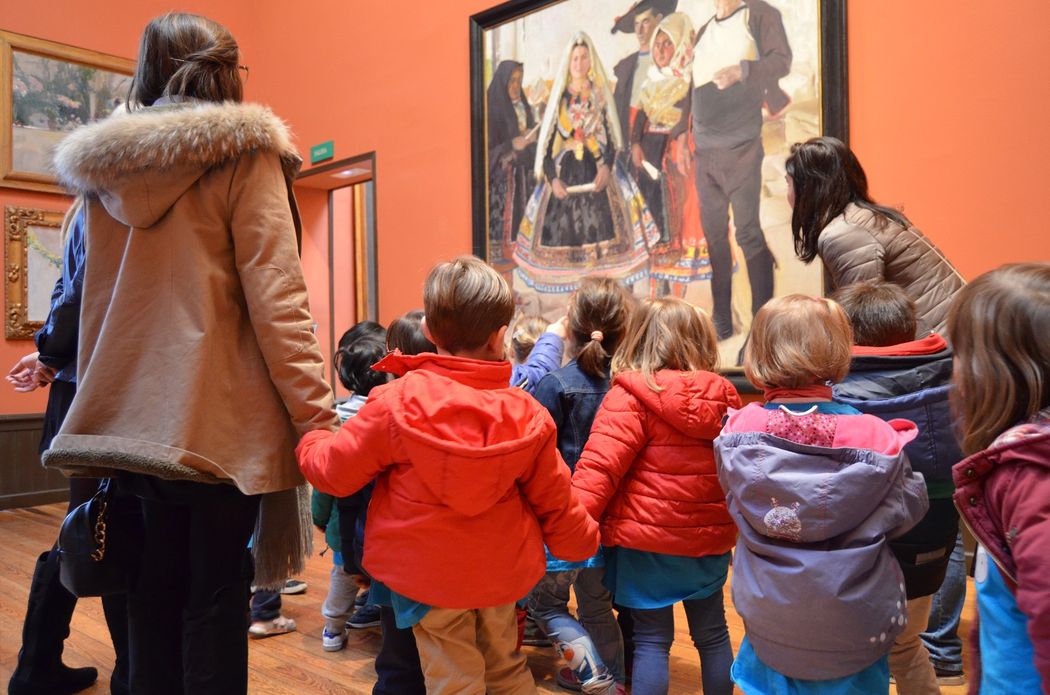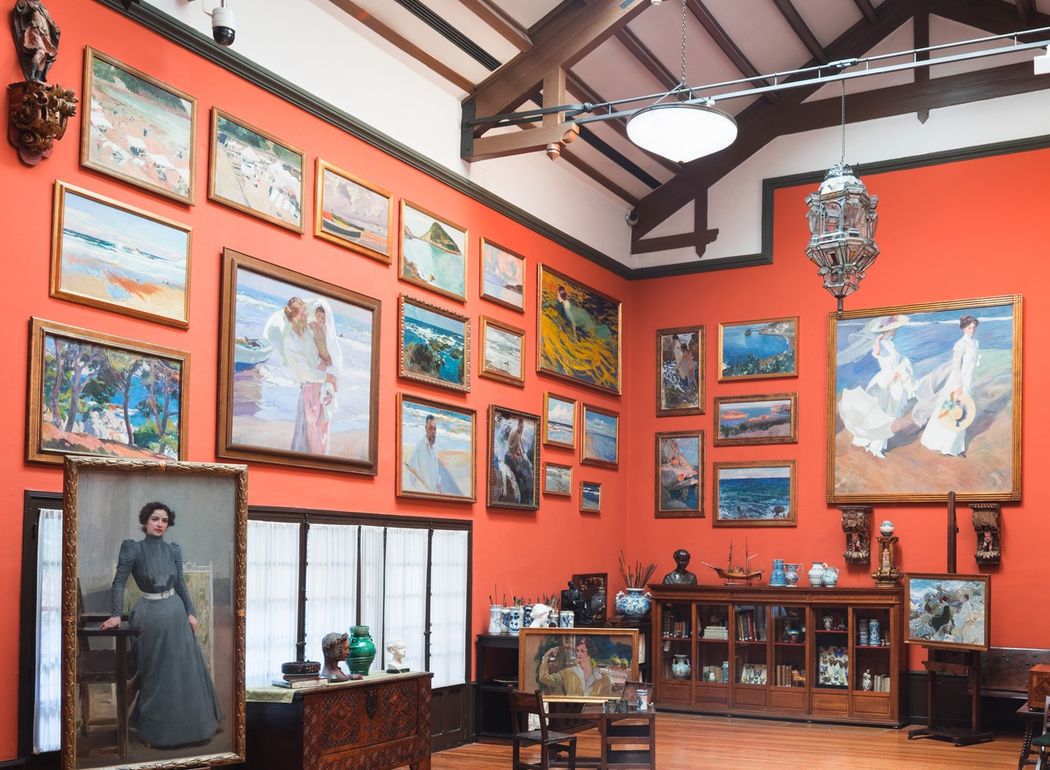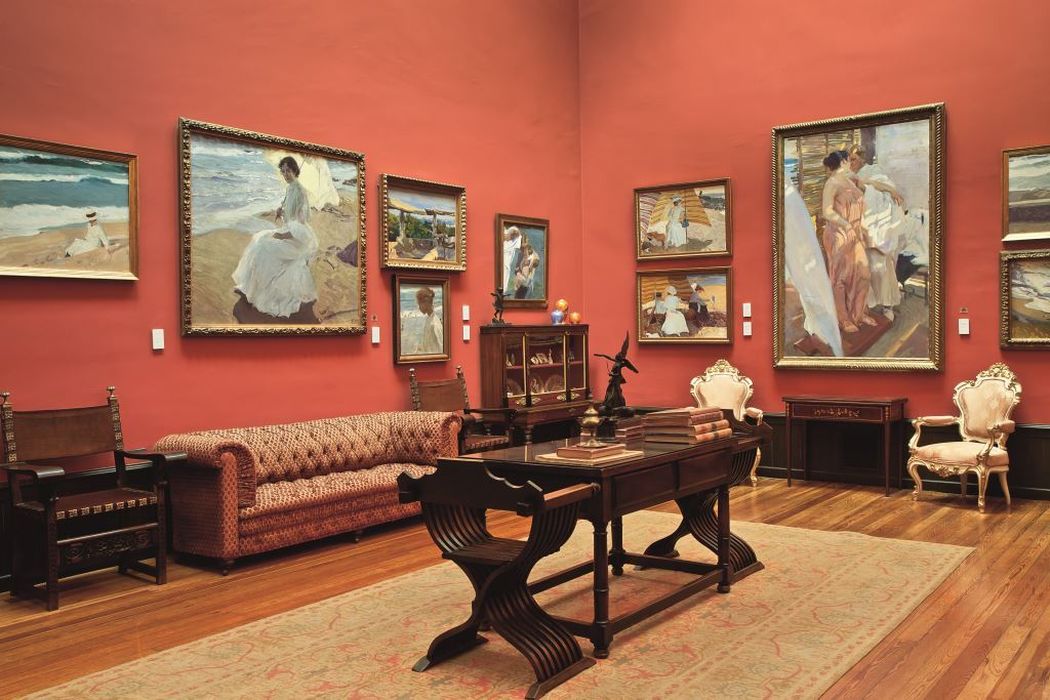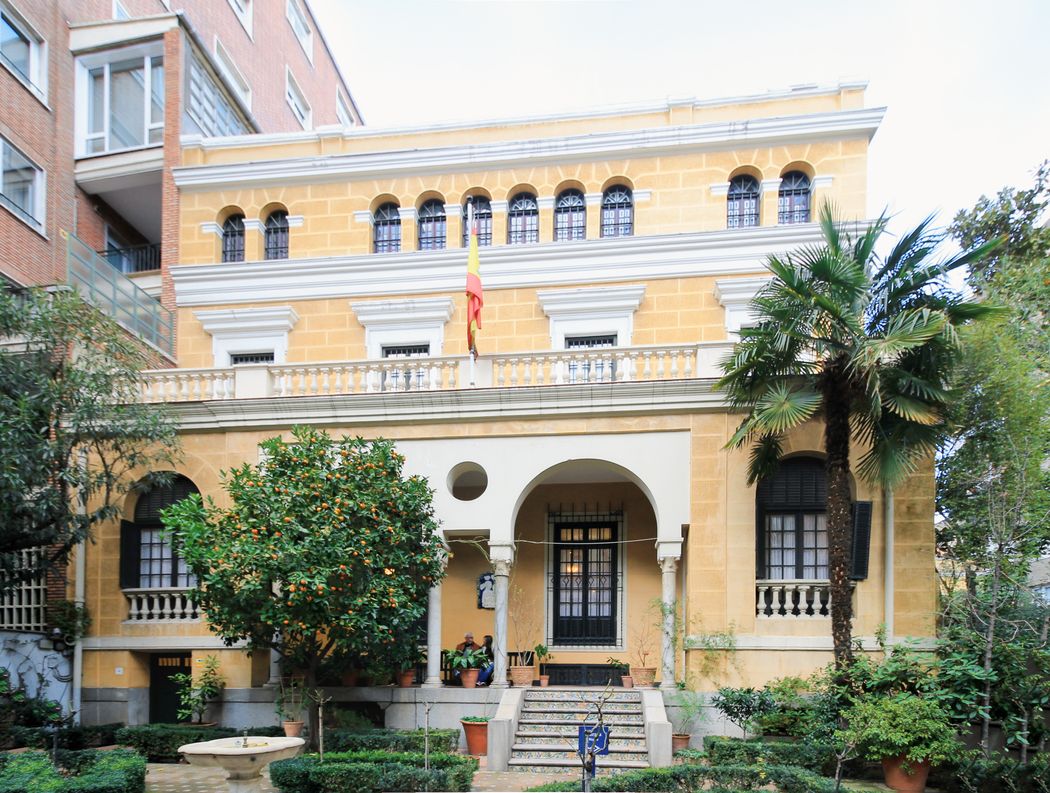Engaging a museum's youngest visitors
Developing learning programmes for 3-6 year olds at the Museo Sorolla
The Museo Sorolla has been exploring how to engage the museum's smallest visitors. In an innovative programme for 3-6 year olds children are experiencing the museum in a completely new way. Below, Covadonga Pitarch from the Museo Sorolla discusses the various children's programmes the museum has developed and their hope that by opening up the museum to the youngest visitors they can foster a lifelong passion for the arts. The original Spanish version follows.
-
The Museo Sorolla has always been a particularly family-oriented museum. The joyful, vibrant work of Joaquín Sorolla y Bastida (1863-1923) often includes depictions of scenes easily recognisable to young children, such as boys and girls swimming in the sea, playing or with their parents. Furthermore, the collection is on display in the artist's own house in which his studios with their easels and brushes and the principal rooms all survive, creating an atmosphere that is more welcoming than a traditional museum.
The large number of families with small children that have always visited the museum has led to the organisation of workshop-visits and other resources which facilitate an enjoyment and understanding of these activities. The museum offers three types of visits for children: an unguided visit, a workshop-visit and school visits.

On its website the museum offers parents material for planning a visit: drawings that can be downloaded and a story on the artist to read together, as the more children know prior to their visits, the more they enjoy them. The museum has also produced a children's audio guide for listening to during a visit and a book (Play and learn with Sorolla, also available in English) to continue learning and drawing back home.
For families with smaller children the museum organises workshops on alternate months. Here the key concept is making the children the centre of the activity as the primary aim is for them to enjoy their visit and have fun, based on our firm conviction that children who enjoy visiting museums will become adults who appreciate and value the cultural heritage.
-
“The key to visits for 3 to 6-year-olds is relating the content of the visit to the everyday realities of children of this age"
-
This visit is structured around questions for participants, such as “Do you all paint?", “What do you most like painting?", which lead on to an account of Sorolla as a painter and his principal subjects. Asking about participants' families introduces Sorolla's own family. Children are asked to close their eyes, then on opening them there is a discussion on the importance of light. The key to visits for 3 to 6-year-olds is that of participation and relating the content of the visit to the everyday realities of children of this age.

The same principles apply to the school visits at Infants level (2 to 6-year-olds) organised by the museum. In this case the visit is also adapted to the school curriculum, which includes the following learning goals: knowledge of the body, discovery of the natural and family environment, co-existence with others, acquiring healthy habits, etc. In front of the portrait of Sorolla's father-in-law, Antonio García Peris, participants thus discuss the importance of grandparents; in front of The toy Yacht children are asked if they go to the beach and what they do there, given that even a very small child can identify with the subject of the painting playing with his toy boat on the seashore.
-
“The museum considers it the highest level of achievement when children who have participated in a learning programme return with their parents"
-
When the visit reaches the living room, children are asked what the room's purpose was. All of them know what the room was for and they generally ask where the tv is. This allows for an explanation of the fact that Sorolla lived a long time ago. The visits lasts approximately 45 minutes and generates very high satisfaction ratings. The museum considers it the highest level of achievement when children who have participated in a learning programme return with their parents.

Read on for the original Spanish
El Museo Sorolla siempre ha sido una institución muy familiar. La pintura alegre y llena de vida de Joaquín Sorolla Bastida (1863-1923), en la que, a menudo, son los niños los protagonistas que se bañan en el mar, juegan o posan con sus padres, muestran escenas en las que fácilmente los más pequeños pueden identificarse. La colección, además, se expone en su propia casa que conserva los estudios de pintor, con sus caballetes y sus pinceles y las habitaciones principales, que crean un ambiente más acogedor que el clásico Museo.
La gran cantidad de familias con niños pequeños que visitaban el Museo fueron un gran aliciente para trabajar en crear no solo visitas-talleres, sino todo tipo de herramientas que facilitaran la explicación y el disfrute de la visita. En resumen, el Museo ofrece tres modalidades de visita para los diferentes públicos infantiles: visita libre, visita-taller y visita para escolares.

El Museo, a través de su página web, ofrece a los padres material para preparar la visita: dibujos para descargar y un cuento sobre el pintor para leer en familia, pues los niños cuanto más conocen la visita más la disfrutan. Además, el Museo ha creado una audioguía infantil para escuchar durante la visita y un libro (“Juega y aprende con Sorolla” también en Inglés) para continuar aprendiendo y dibujando al volver a casa.
Para las familias con niños más pequeños el Museo realiza talleres en meses alternos. En éstos la clave es convertir a los niños en los máximos protagonistas, siempre con la idea de que lo más importante es conseguir que disfruten y lo pasen bien en el Museo (con el firme convencimiento de que los niños a los que les gusta visitar Museos serán adultos que aprecien y valoren el patrimonio).
-
“Preguntando sobre sus familias introducimos a la de Sorolla, la fundadora del Museo”
-
La visita se articula en torno a preguntas para los niños como “¿vosotros pintáis?” o “¿qué os gusta más pintar?”, lo que nos da pie a hablar de que Sorolla era pintor y cuáles fueron sus temas principales. Preguntando sobre sus familias introducimos a la de Sorolla, la fundadora del Museo. Les pedimos que cierren muy fuerte los ojos y al abrirlos hablamos de la importancia de la luz. La clave en las visitas para niños de 3 a 6 años es la participación e intentar relacionar el contenido de la visita con las cosas cotidianas de un niño de su edad.

Los mismos principios se aplican a las visitas para escolares de infantil (de 2 a 6 años) que el Museo organiza. En estos casos la visita intenta, además, adaptarse al curriculum escolar que tiene entre otros por objetivos: el conocimiento del cuerpo, el descubrimiento del entorno natural y familiar, la convivencia con los demás, la adquisición de hábitos de vida saludables, etc. Así, por ejemplo, delante del retrato de Antonio García Peris, suegro de Sorolla, hablamos de la importancia de los abuelos; frente a “El balandrito" les preguntamos si van a la playa y qué hacen allí, ya quees fácil para un niño, por pequeño que sea identificarse con el protagonista del cuadro que juega con su barco o “balandro" a orillas del mar. Al llegar al salón de la casa preguntamos para qué servía esta habitación.
-
“El Museo considera su mayor éxito cuando los escolares que participan en este programa regresan al Museo para enseñárselo a sus padres"
-
Todos sabrán que es el salón y a continuación suelen preguntar dónde está la tele. Esto nos sirve para contar que Sorolla vivió hace mucho tiempo. Esta visita dura aproximadamente 45 minutos y los índices de satisfacción en las encuestas posteriores son muy altos. El Museo considera su mayor éxito cuando los escolares que participan en este programa regresan al Museo para enseñárselo a sus padres.
Covadonga Pitarch, Museo Sorolla
Read more about the Museo Sorolla Studio.
